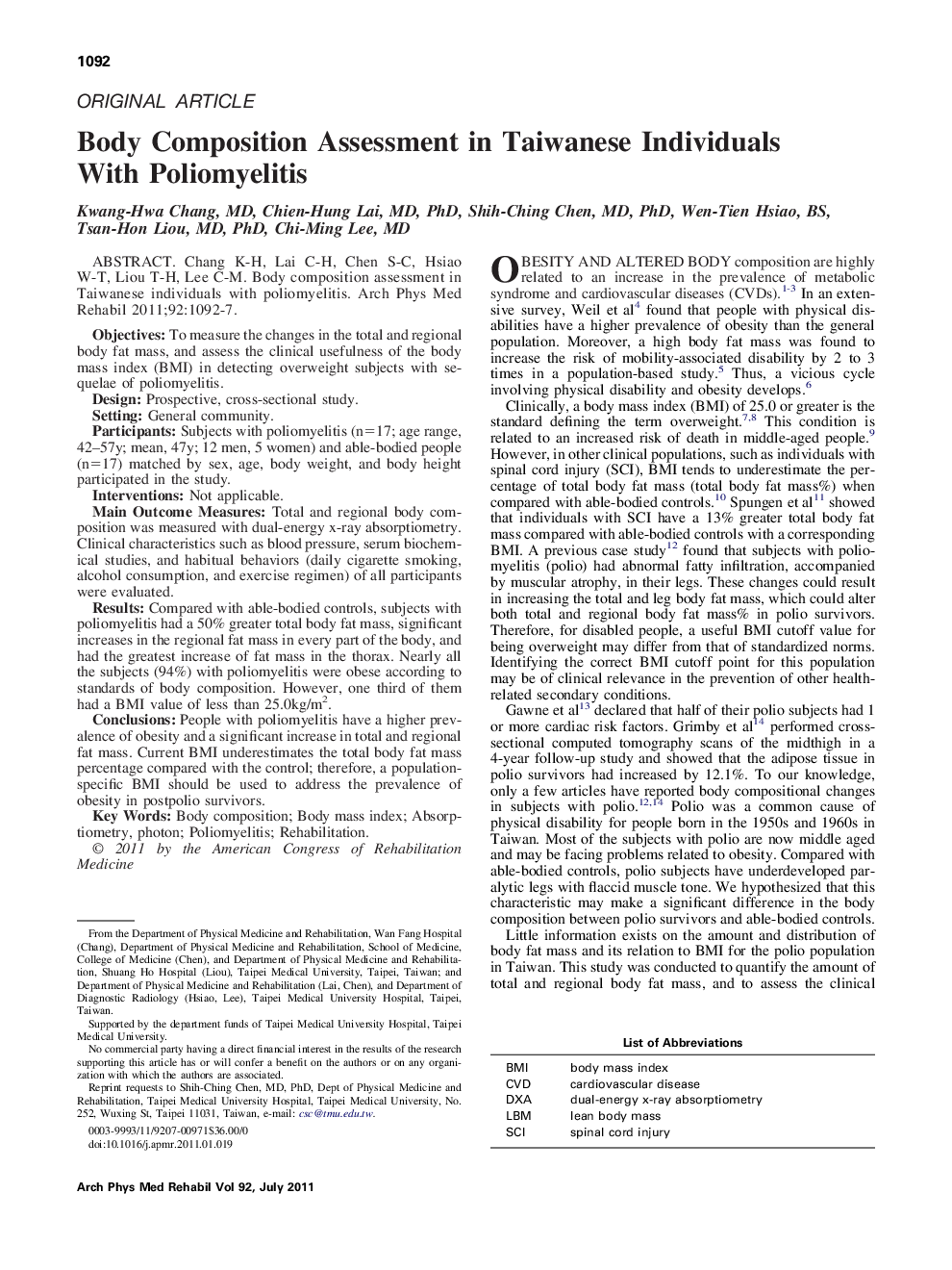| Article ID | Journal | Published Year | Pages | File Type |
|---|---|---|---|---|
| 3450317 | Archives of Physical Medicine and Rehabilitation | 2011 | 6 Pages |
Chang K-H, Lai C-H, Chen S-C, Hsiao W-T, Liou T-H, Lee C-M. Body composition assessment in Taiwanese individuals with poliomyelitis.ObjectivesTo measure the changes in the total and regional body fat mass, and assess the clinical usefulness of the body mass index (BMI) in detecting overweight subjects with sequelae of poliomyelitis.DesignProspective, cross-sectional study.SettingGeneral community.ParticipantsSubjects with poliomyelitis (n=17; age range, 42–57y; mean, 47y; 12 men, 5 women) and able-bodied people (n=17) matched by sex, age, body weight, and body height participated in the study.InterventionsNot applicable.Main Outcome MeasuresTotal and regional body composition was measured with dual-energy x-ray absorptiometry. Clinical characteristics such as blood pressure, serum biochemical studies, and habitual behaviors (daily cigarette smoking, alcohol consumption, and exercise regimen) of all participants were evaluated.ResultsCompared with able-bodied controls, subjects with poliomyelitis had a 50% greater total body fat mass, significant increases in the regional fat mass in every part of the body, and had the greatest increase of fat mass in the thorax. Nearly all the subjects (94%) with poliomyelitis were obese according to standards of body composition. However, one third of them had a BMI value of less than 25.0kg/m2.ConclusionsPeople with poliomyelitis have a higher prevalence of obesity and a significant increase in total and regional fat mass. Current BMI underestimates the total body fat mass percentage compared with the control; therefore, a population-specific BMI should be used to address the prevalence of obesity in postpolio survivors.
